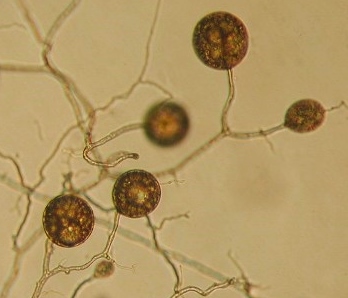From the report “Inoculation of arbuscular mycorrhizal fungi can substantially reduce phosphate fertilizer application to Allium fistulosum L. and achieve marketable yield under field condition”, of Keitaro Tawaraya, Ryouta Hirose, and Tadao Wagatsuma, published at Biology and Fertility of Soils
Phosphorus (P) is one of the essential elements for plant growth and often the first limiting nutrient in soils due to its low availability, and the heavy application of P fertilizer has been carried out for crop production to avoid growth decline due to P deficiency.
Rock phosphate is the raw material of P fertilizer, and it is estimated that the world’s reserve would last for only 90 years. The expected global peak of P production is predicted to occur around 2030.
By other side, the heavy application of P fertilizer accelerates P enrichment of water, and this, in turn, leads to the eutrophication of rivers, lakes, and marshes. In this regard, it is necessary to develop sustainable and environmentally safe technologies for the use of P resources.
It is known that arbuscular mycorrhizal (AM) fungi promote the growth of many plants by enhancing P uptake. The elongation of the extraradical hyphae of AM fungi into soil increases the surface area for the uptake of P, which is often depleted in rhizosphere soil solution.
In current assay, the effects of inoculating arbuscular mycorrhizal (AM) fungi on the growth, phosphorus (P) uptake, and yield of Welsh onion (Allium fistulosum L.) were examined under the non-sterile field condition.

Welsh onion was inoculated with the AM fungus, Glomus R-10, and grown in a glasshouse for 58 days. Non-inoculated plants were grown as control. Inoculated and non-inoculated seedlings were transplanted to a field with four available soil P levels (300, 600, 1,000, and 1,500 mg P2O5/ kg soil) and grown for 109 days. AM fungus colonization, shoot P concentration, shoot dry weight, shoot length, and leaf sheath diameter were measured.
Percentage AM fungus colonization of inoculated plants was 94% at transplant and ranged from 60% to 77% at harvest. Meanwhile, non-inoculated plants were colonized by indigenous AM fungi.
Shoot length and leaf sheath diameter of inoculated plants were larger than those of non-inoculated plants grown in soil containing 300 and 600 mg P2O5/kg soil. Shoot P content of inoculated plants was higher than that of non-inoculated plants grown in soil containing 300 and 600 mg P2O5/kg soil. Yield (shoot dry weight) was higher for non-inoculated plants grown in soil containing 1,000 and 1,500 mg P2O5/kg soil than for those grown in soil containing 300 and 600 mg P2O5/kg soil.
Meanwhile, the yields of inoculated plants (200 g/plant) grown in soils containing the four P levels were not significantly different. Yield of inoculated plants grown in soil containing 300 mg P2O5/kg soil was similar to that of non-inoculated plants grown in soil containing 1,000 mg P2O5 /kg soil.
The cost of AM fungal inoculum for inoculated plants was 2,285 USD/ha and lower than the cost of superphosphate (5,659 USD/ha) added to soil containing 1,000 mg P2O5/kg soil for non-inoculated plants. The inoculation of AM fungi reduced the amount of P fertilizer to be applied and the production cost of A. fistulosum under the field condition. These results indicate that the inoculation of AM fungi can achieve marketable yield of A. fistulosum under the field condition with reduced application of P fertilizer.
Aside of above, to comment that there has been little known about how long inoculated AM fungi survive in the soil and how they affect a community of indigenous soil microbes including AM fungi. Research on impact of exotic AM fungi on local soil microbial species and community is required to elucidate best management practices for mycorrhizal treatment.

